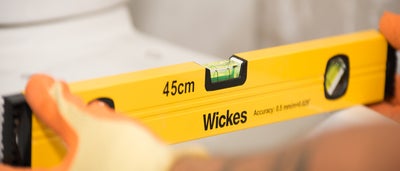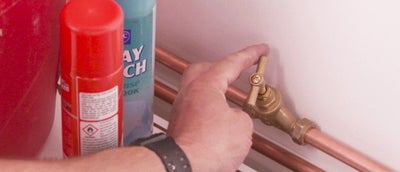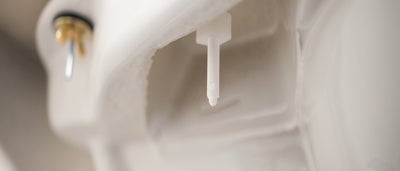Replacing a toilet might seem like a big job, but with the right tools and instructions, you can do it yourself. This guide will show you how to replace a close-coupled toilet, the most common type in the UK, in a few straightforward steps. But if you're installing a toilet in a new location, it's best to hire a plumber to connect it to the main soil pipe.
Watch our how-to-video then follow our step-by-step instructions to help you get your new toilet up and running. Don't forget to check out our guide on how to remove a toilet before you get started to ensure you remove your old toilet safely and with minimal damage.
Step by step
Assemble the flush mechanism and the internal components of the cistern, following the manufacturer’s instructions. Make sure not to overtighten the fixings.
Next, attach the large close-coupled washer on top of the pan. Place the cistern on top, ensuring the flush mechanism thread fits securely through the washer. Tighten the provided washers and wing nuts to secure the cistern to the pan.
Insert the pan connector into the soil pipe, ensuring a snug fit. Align the pan with the connector and make sure it sits flush with the waste pipe. A flexible pan connector can be easier to use if space is tight. Ensure the connection is secure and leak-proof.
Use a spirit level to check if the pan and cistern are level. If they aren’t, adjust by adding packers underneath the pan until both are level.
If your cistern has fixing holes, mark their position on the wall with a pencil for later.
Slide the toilet out of position and use a cable and pipe detector to check for hidden obstructions before drilling. Mark the fixing points, drill pilot holes, and then drill with a 10mm bit. If you're fixing to concrete, use a masonry drill bit and appropriate wall plugs.
With the toilet in place, apply silicone sealant around the base to provide a watertight seal. Smooth the sealant with a damp cloth for a neat finish.
Wrap PTFE tape around the water inlet threads and reconnect the water supply using a flexible connector if necessary – preferably one with a small isolation valve Slowly turn the water supply back on while checking for any leaks around the connections.
Once the water is back on, install the flush mechanism as per the manufacturer’s instructions. Fit the cistern lid and test the flush to ensure everything is working correctly.
Attach the hinges to the toilet seat and secure it to the pan using the provided fixings. Once fitted, apply a final line of silicone sealant around the base of the toilet for a polished look.
FAQs
If you're still unsure about how to fit your new toilet, check out our FAQs for answers to common questions. You'll find helpful tips and solutions to keep your toilet running smoothly.
For a back-to-wall toilet, the process is similar, but the cistern is concealed in the wall or within furniture. Follow the manufacturer’s instructions for connecting the flush mechanism and securing the toilet to the wall or furniture unit.
High-level toilets require more vertical space. The cistern is mounted higher up on the wall, with a long flush pipe connecting it to the pan. You'll need brackets for securing the cistern and additional steps for fixing the flush pipe. Make sure you measure carefully before drilling into the wall.
Most toilet seats are secured by bolts underneath the seat at the back of the pan. Use a screwdriver to unscrew the bolts, then lift the seat away. If the bolts are rusty or difficult to remove, apply some lubricant.
If your toilet seat is wobbly, check the bolts underneath the seat and tighten them with a screwdriver. Some modern seats have top-fixing bolts, which are easier to access.







